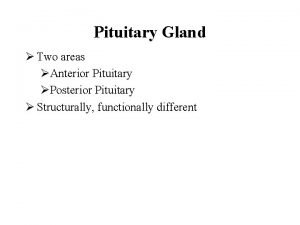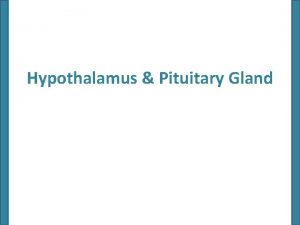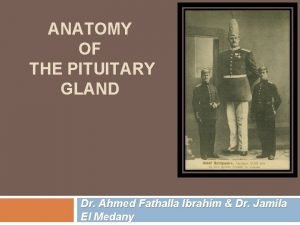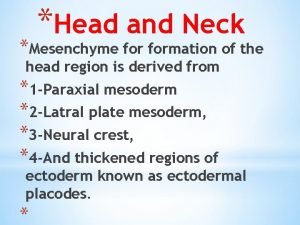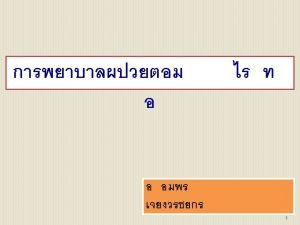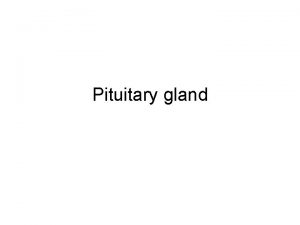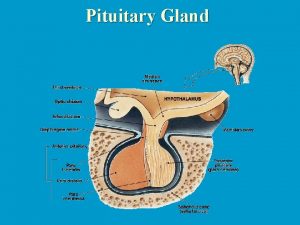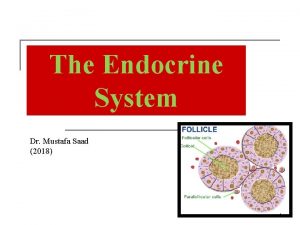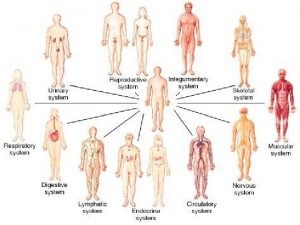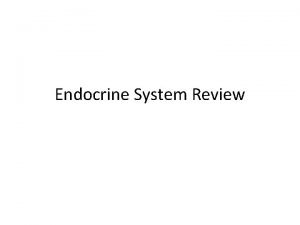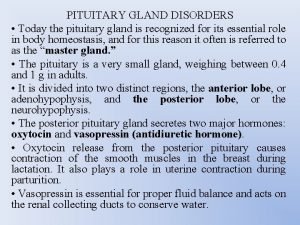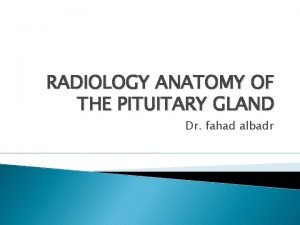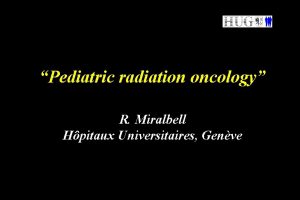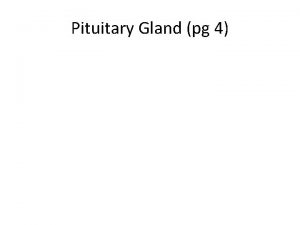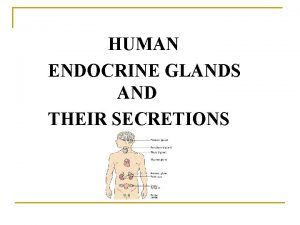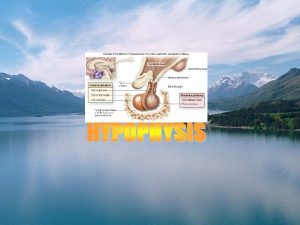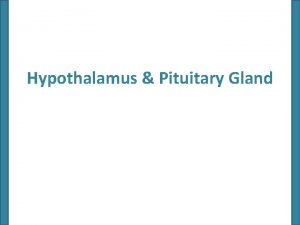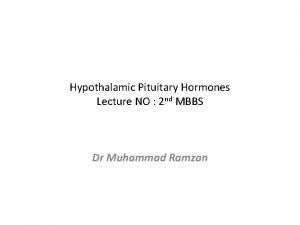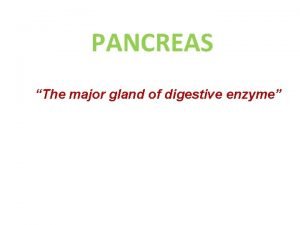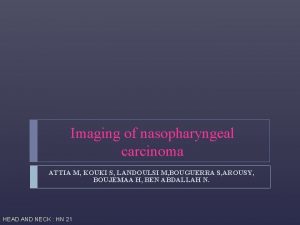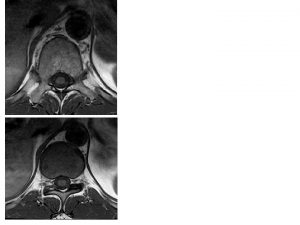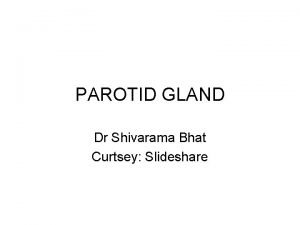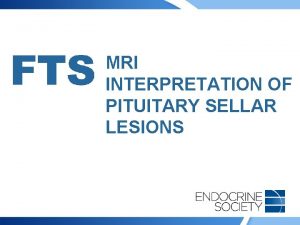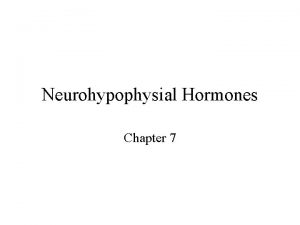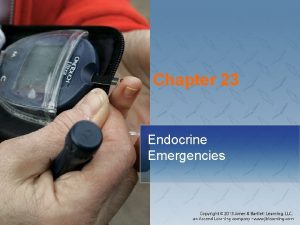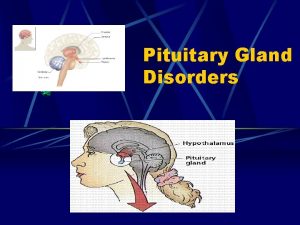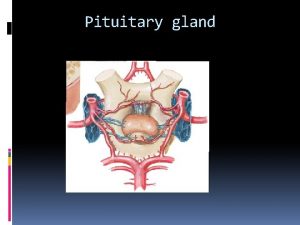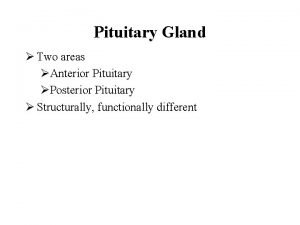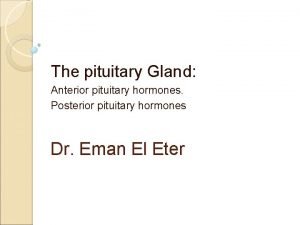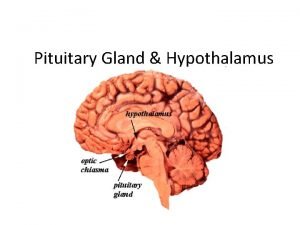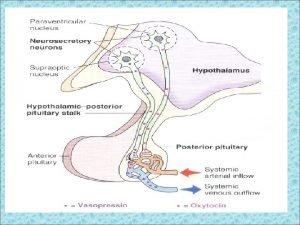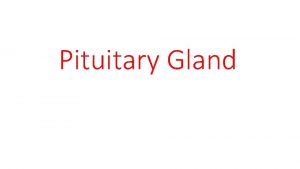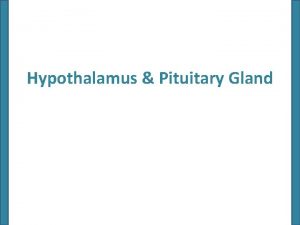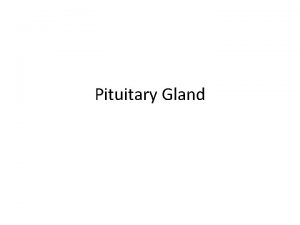RADIOLOGY ANATOMY OF THE PITUITARY GLAND Dr fahad








































- Slides: 40

RADIOLOGY ANATOMY OF THE PITUITARY GLAND Dr. fahad albadr

ANATOMY OF THE PITUITARY GLAND

OBJECTIVES At the end of the lecture, students should be able to: q Describe the position of the pituitary gland. q List the structures related to the pituitary gland. q Differentiate between the lobes of the gland

PITUITARY GLAND (HYPOPHYSIS CEREBRI) q. It is referred to as the master of endocrine glands q. It is a small oval structure 1 cm in diameter.

PITUITARY GLAND X-RAY SKULL: LATERAL VIEW SAGITTAL SECTION OF HEAD & NECK Pituitary gland Hypophyseal fossa Sphenoidal air sinus

POSITION It lies in the middle cranial fossa It is well protected in sella turcica (hypophyseal fossa) of body of sphenoid Sella turcica

Optic chiasma Mamillary body Body of sphenoid q it lies between optic chiasma (anteriorly) & mamillary bodies (posteriorly).


A fold of dura mater (Diaphragma sellae) covers the pituitary gland & has an opening for passage of infundibulum (pituitary stalk) connecting the gland to hypothalamus.

IMPORTANT RELATIONS q. SUPERIOR: Diaphragma sellae q INFERIOR: Sphenoidal air sinuses q. LATERAL: Cavernous sinuses

SUBDIVISIONS OF PITUITARY GLAND Hypothalamo-hypophyseal tract The gland is subdivided into: 1) Anterior lobe (Adenohypophysis): it is the True gland, Secretes hormones 2) Posterior lobe (Neurohypophysis): connected to hypothalamus through hypothalamo-hypophyseal tract, tract Stores hormones secreted by hypothalamic nuclei

BLOOD SUPPLY OF PITUITARY GLAND ARTERIES: Superior & inferior hypophyseal arteries (branches of internal carotid artery) VEINS: Hypophyseal veins drain into Cavernous Sinuses.

DISTRIBUTION OF ARTERIES a hypothalamohypophseal portal vessel §Superior hypophyseal: supplies infundibulum & forms a capillary network from which vessels pass downward & form sinusoids into the anterior lobe of pituitary gland (hypophyseal portal system). §Inferior hypophyseal: supplies posterior lobe of pituitary gland.

ANTERIOR LOBE §Hormone-releasing & inhibiting factors produced by hypothalamus use Hypophyseal Portal System of vessels to reach the Anterior lobe of pituitary gland

POSTERIOR LOBE §The neurohypophysis receives a nerve supply from some of the hypothalamic nuclei (supraoptic & paraventricular) §The axons of these nuclei convey their neurosecretion to the Posterior lobe of pituitary gland through Hypothalamo. Hypophyseal tract from where it passes into the blood stream.

NORMAL PITUITARY GLAND v The gland is composed of two parts: ØAnterior lobe (adeno hypophysis) ØPosterior lobe (neuro hypophysis) v Normal size: ØWeight: 0. 5 g ØHeight: 4 -12 mm ØAnterior posterior: 5 -16 mm

INDICATIONS FOR IMAGING THE PITUITARY GLAND v. Hormonal dysfunction § Cushing syndrome § Growth abnormalities e. g. Growth hormone deficiency, acromegaly v. Visual abnormalities vheadache


v. What is best modality to image the pituitary gland ? A. B. C. D. E. X ray CT scan MRI US Nuclear medicine

v. What is best modality to image the pituitary gland ? A. X ray B. CT scan C. MRI D. US E. Nuclear medicine

CT scan MRI

CT scan MRI

X RAY


1 2 3 4 5 6

1 2 3 4 5 6 1 -Optic sulcus 2 - Anterior clinoid process 3 -Floor of sella turcia (Pituitary fossa) 4 - Posterior clinoid process 5 - Dorsum sella 6 - Sphenoid sinus


MRI

4 3 5 2 6 1

4 3 1 - pituitary gland 2 - sphenoid sinus 3 - optic chiasm 4 - hypothalamus 5 - pituitary stalk 6 - claivus 5 2 6 1

NORMAL PITUITARY ADENOMA


3 2 1 4 5 6

3 2 1 4 5 6

Optic chiasm Pituitary stalk Carotid artery Cavernous sinus Pituitary gland Sphenoid sinus





THE END
 Thyoid gland
Thyoid gland Pituitary gland and pineal gland spiritual
Pituitary gland and pineal gland spiritual Endocrine weight loss
Endocrine weight loss Hypothalamus gland
Hypothalamus gland Histology of pituitary gland
Histology of pituitary gland Anterior pituitary
Anterior pituitary Blood supply of pituitary gland
Blood supply of pituitary gland Hypothalamus and pituitary gland connection
Hypothalamus and pituitary gland connection Diaphragma sellae
Diaphragma sellae Head mesenchyme
Head mesenchyme Pituitary gland
Pituitary gland Hypophyseal fossa and pituitary gland
Hypophyseal fossa and pituitary gland Pituitary gland embryonic origin
Pituitary gland embryonic origin Pituitary gland inferior view
Pituitary gland inferior view Ceolocant
Ceolocant Hypophyseal fossa and pituitary gland
Hypophyseal fossa and pituitary gland Adrenal glands in body
Adrenal glands in body Putery gland
Putery gland Sketch of pituitary gland
Sketch of pituitary gland Hypersecretion of prolactin
Hypersecretion of prolactin Pituitary gland disorders
Pituitary gland disorders Pituitary gland tumor mri images
Pituitary gland tumor mri images Pituitary gland
Pituitary gland Pituitary gland hormones
Pituitary gland hormones Hypophyseal fossa and pituitary gland
Hypophyseal fossa and pituitary gland N
N Hashitoxicosis
Hashitoxicosis Dwrfism
Dwrfism Pituitary gland
Pituitary gland Pituitary gland division
Pituitary gland division Posterior abdominal wall nerves
Posterior abdominal wall nerves Fahad alosaimi
Fahad alosaimi Fahad subhi mohammed
Fahad subhi mohammed Nasopharynx anatomy ct
Nasopharynx anatomy ct Corpus callosum anatomy radiology
Corpus callosum anatomy radiology Structures passing parotid gland
Structures passing parotid gland Pituitary adenoma
Pituitary adenoma Dopamine agonists
Dopamine agonists Difference between anterior and posterior pituitary
Difference between anterior and posterior pituitary Chapter 23 the endocrine system
Chapter 23 the endocrine system Propothiouracil
Propothiouracil





